AWS Certified SysOps Administrator - Associate
Domain 3 Deployment Provisioning and Automation
Strategies for Service Provisioning Across AWS Globally
Welcome back, students.
In this lesson, we explore comprehensive strategies for provisioning services across multiple AWS regions and accounts. This approach not only meets disaster recovery (DR) requirements but also optimizes service delivery for users around the world.
Global Service Provisioning Overview
AWS provides a straightforward way to deploy services on a global scale. You can, for example, deploy resources in regions such as Singapore and Oregon to accommodate user demands in today’s global marketplace. Consider the following architecture:
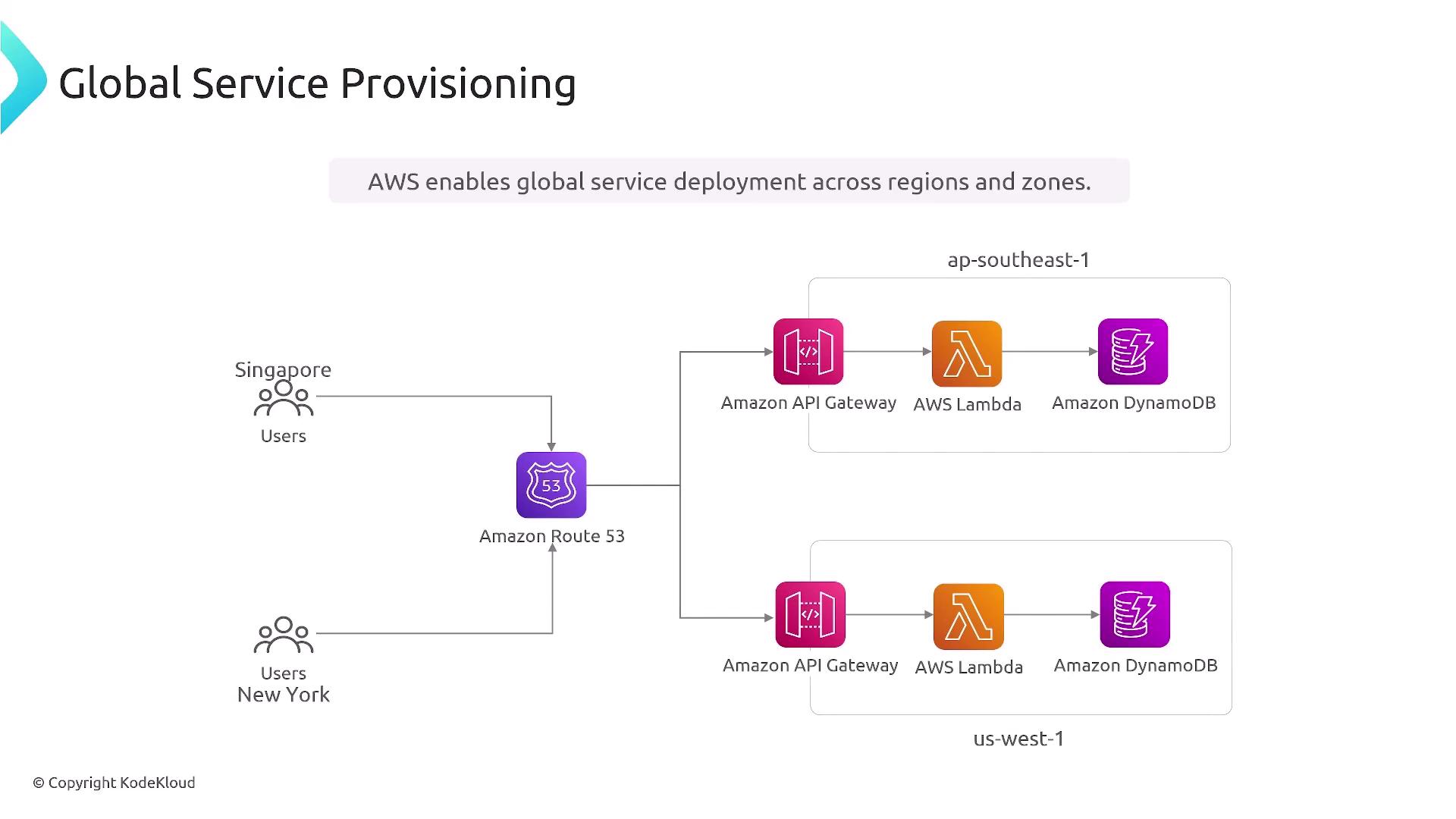
Many implementations also take advantage of DynamoDB global tables to replicate data seamlessly between regions. This helps ensure high availability and fault tolerance by leveraging regional deployment strategies.
Regional Deployment and Traffic Management
A common strategy for global service deployment involves leveraging services such as AWS Global Accelerator. Acting as a global load balancer, Global Accelerator routes end-user traffic to the nearest operational region, reducing latency while maintaining high availability. Consider this diagram:
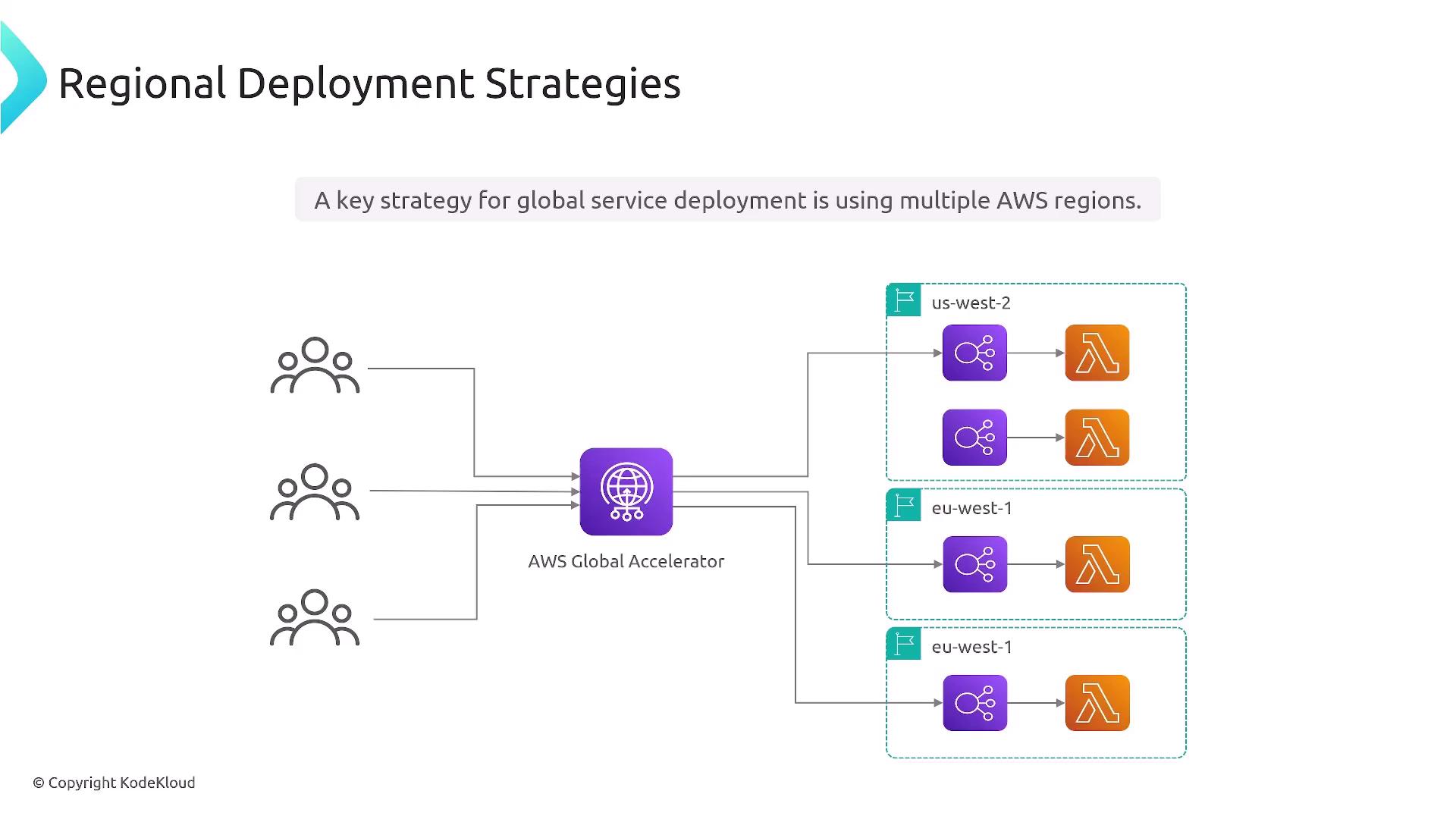
In addition to Global Accelerator, Amazon Route 53 functions as a global DNS service, adding another layer of traffic management. When combined with AWS CloudFront for global content distribution, these services collectively manage incoming traffic effectively while ensuring compliance and DR standards are met.
Data Replication Across Regions
Maintaining data consistency across regions is crucial in global deployments. AWS offers robust mechanisms to replicate data across regions. For instance, Amazon S3 supports cross-region replication (CRR), which automatically copies data and templates to a different region:
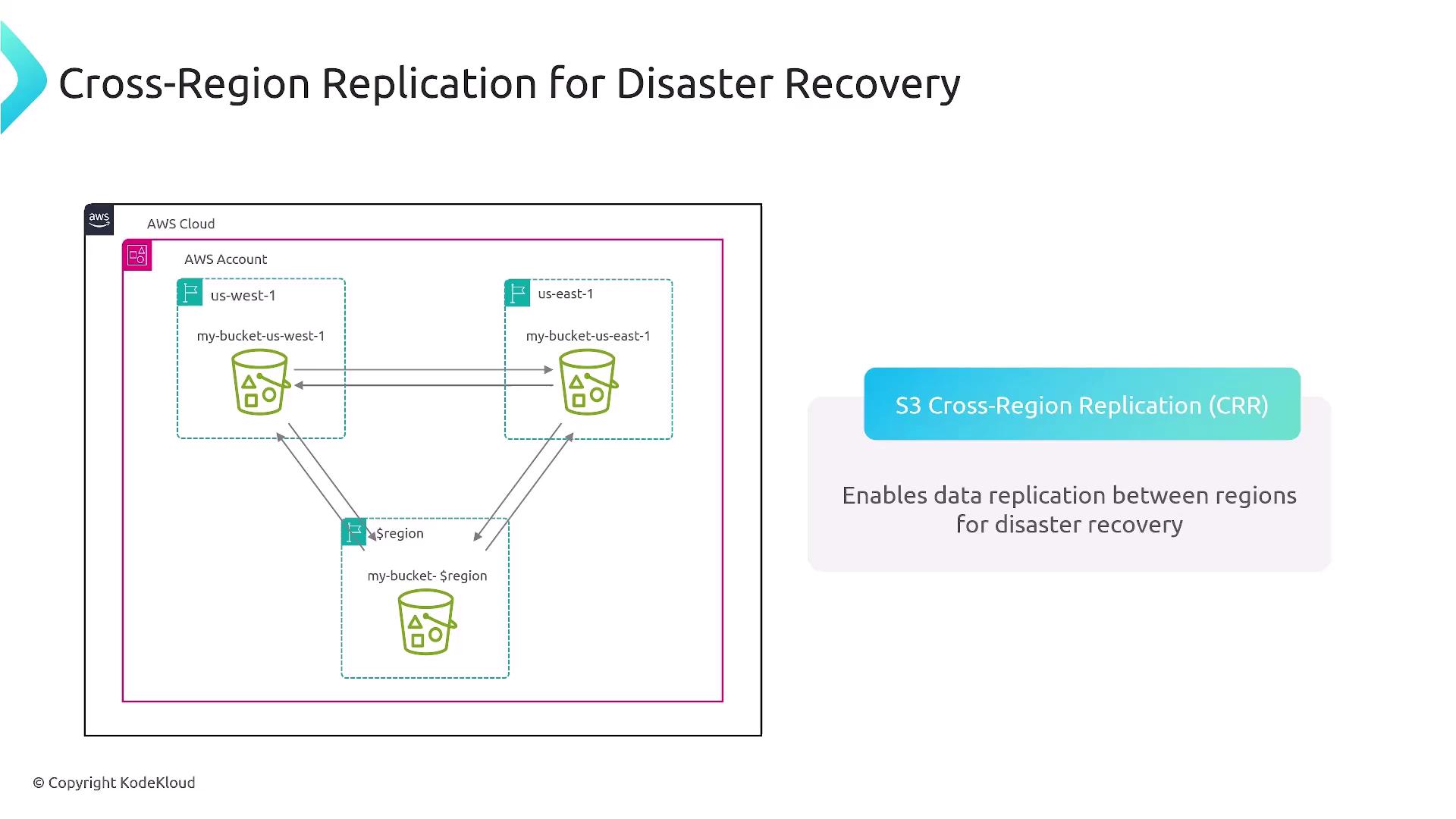
Furthermore, services such as Aurora Global Databases and DynamoDB Global Tables facilitate data replication between primary and secondary clusters. This setup enables the swift promotion of read replicas or standby clusters should the primary region experience a failure:
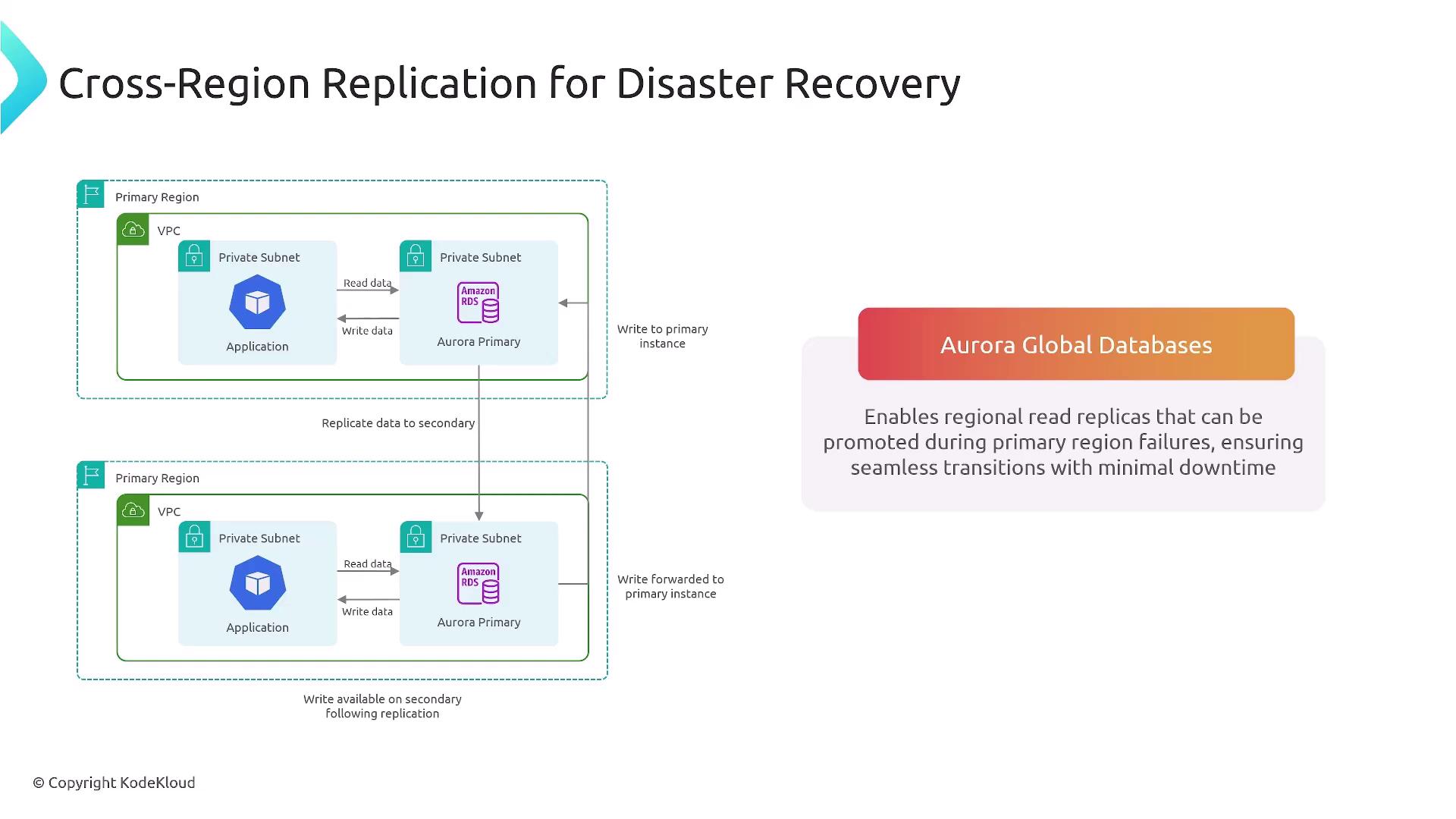
Note
When designing your replication strategy, consider the nature of your workload and compliance requirements to select the most appropriate AWS services.
Provisioning Management with AWS Control Tower and CloudFormation StackSets
Previously, we discussed using AWS CloudFormation for deploying and managing infrastructure within a single region. For global provisioning, the traffic redirection is often handled by Route 53 and Global Accelerator, while in-region deployments are managed by other specialized services.
For scalable deployments across multiple AWS accounts and regions, AWS Control Tower in conjunction with CloudFormation StackSets offers a powerful solution. StackSets enable consistent deployment of CloudFormation stacks across diverse environments, ensuring compliance and preventing configuration drift. Consider the following diagram:
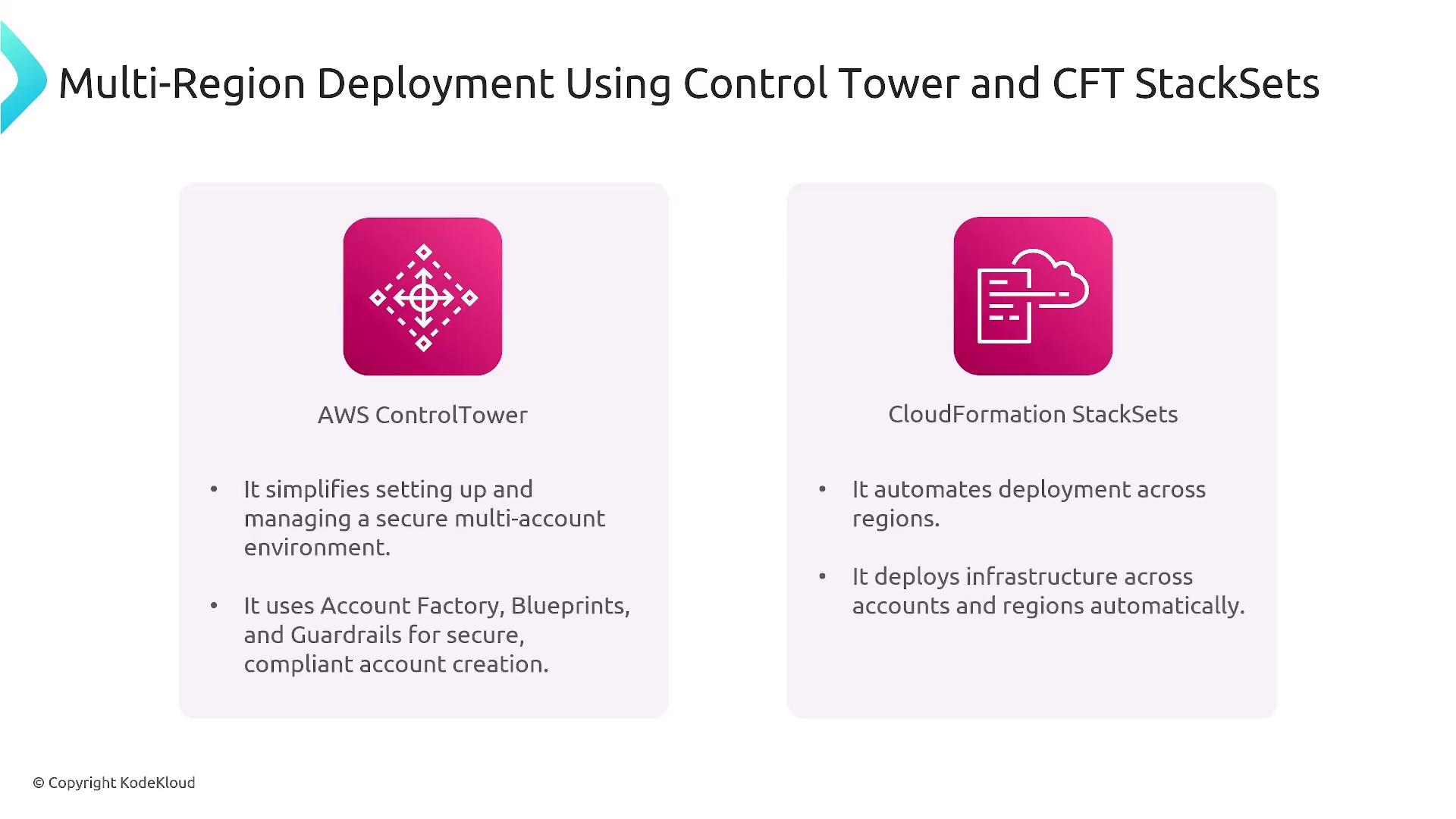
StackSets simplify global infrastructure management by allowing simultaneous rollout of configuration changes—including new accounts, guardrails, and other setups—across all regions.
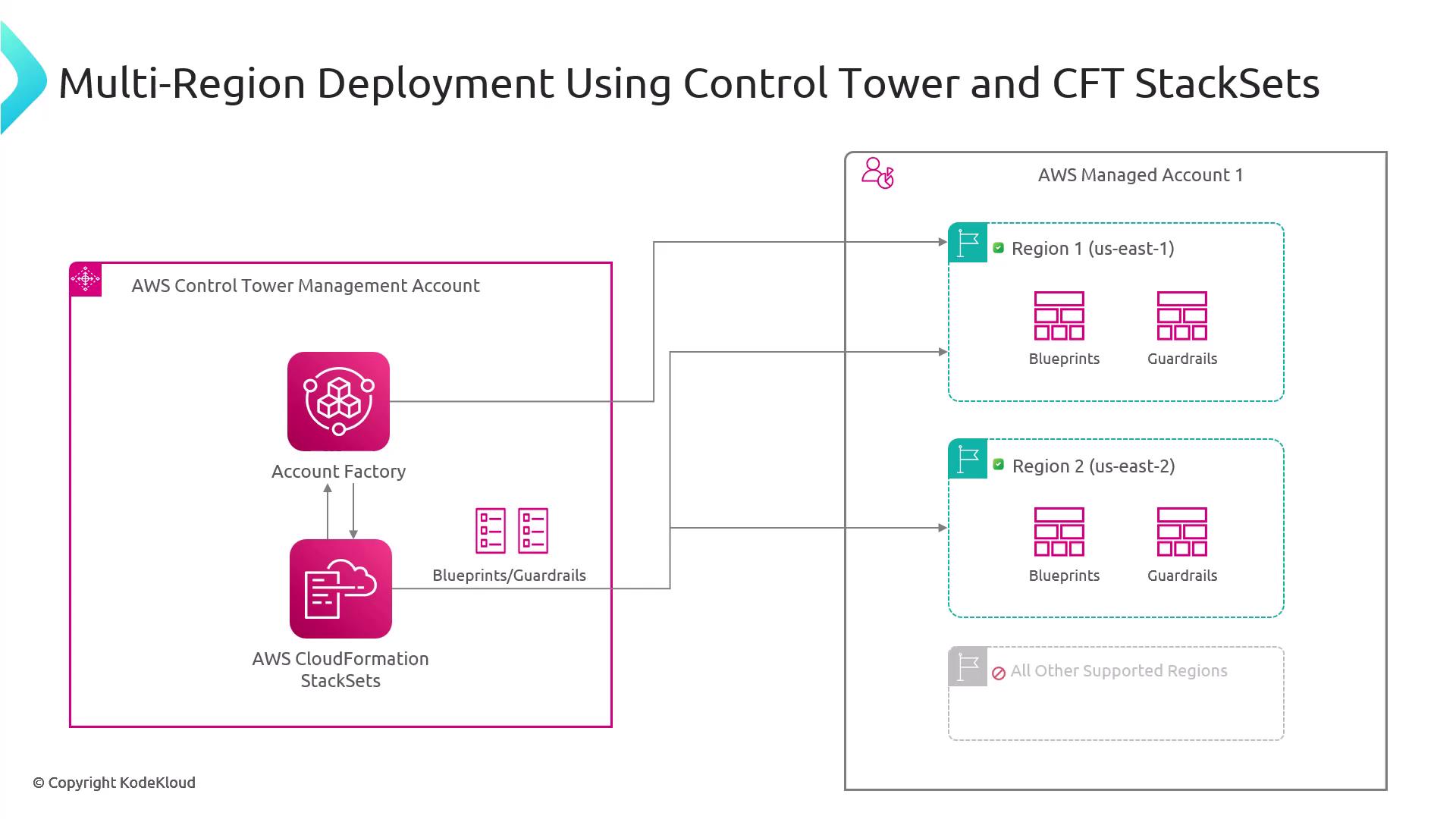
Note
Using AWS Control Tower and CloudFormation StackSets is an effective way to maintain centralized governance and streamline multi-account deployments.
Conclusion
AWS offers a robust suite of tools for global service provisioning, including:
- Traffic Management: Utilize AWS Global Accelerator and Route 53 for efficient traffic routing.
- Data Replication: Implement Aurora Global Databases, DynamoDB Global Tables, and S3 Cross-Region Replication for consistent data management.
- Global Provisioning: Leverage AWS Control Tower and CloudFormation StackSets to manage multi-account deployments and ensure compliance.
These strategies empower you to build resilient, globally available architectures that meet both disaster recovery needs and customer demands.
Catch you in the next lesson.
Watch Video
Watch video content